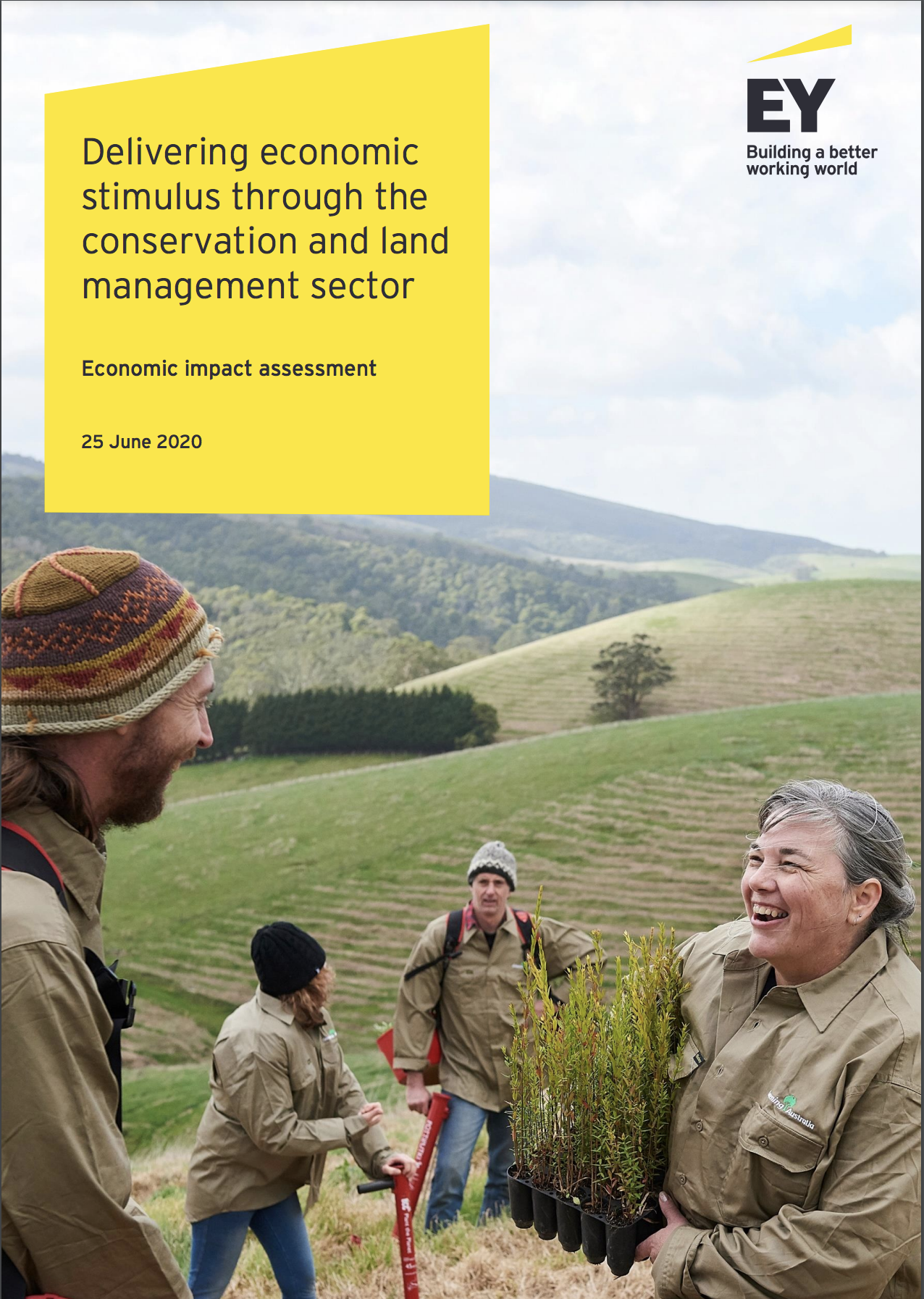economic and social benefits
Expert analysis by Ernst & Young found that a $500 million investment in a conservation and land management employment program would deliver more than $1.2 billion in long-term economic benefits.
Ernst & Young (EY) was enlisted to perform an economic impact assessment of a broad-based program of conservation and land management activities to support Australia’s response to the COVID-19 crisis. This assessment identified a range of economic, social and environmental benefits associated with the proposed program, and found that the program reflected the following characteristics of an
effective economic stimulus measure:
Targeted —The program involves real jobs on real projects. It’s not a make work program. Rather the initiatives have the potential to make our environment and agricultural land better and leave a legacy. Moreover, the program is targeted at alleviating some of the key social and economic concerns of regions affected by COVID-19, as well as the bushfires.
Temporary — The program has a finite start and end date (depending on the scale of the program) and does not bake in structural commitments to the Budget.
Timely — The program can be implemented quickly, and it has been structured around the capacity of the conservation and land management sector to mobilise and deliver projects on-the-ground. Program requirements are largely based around unskilled workers and it can help engage the massive pool of currently unemployed and underemployed workers across Australia, including in regions at risk of entrenched disadvantage.
Proportionate — The program can be scaled up or down. Stimulus decisions, by nature, are made rapidly and in a climate of uncertainty. The proposed program enables policymakers to adjust their investment under each of the program options if necessary.
